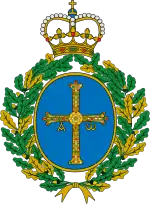Joseph Altman
Joseph Altman (1925 – 2016)[1] was an American biologist who worked in the field of neurobiology.
First years
Born in Hungary to a Jewish family, he survived the Holocaust and migrated with his family via Germany and Australia to the United States. In these places, he sought employment as a librarian and used the opportunity to inform himself reading books about psychology, human behavior, psychoanalysis, and human brain structure. In New York, where he married his first wife Elizabeth Altman, he became a graduate student in psychology in the laboratory of Hans-Lukas Teuber, earning a PhD.,in 1959 from New York University. That degree launched his scientific career, first as a postdoctoral fellow at Columbia University, next at the Massachusetts Institute of Technology, and finally at Purdue University. During his career, he collaborated closely with his second wife, Shirley A. Bayer. From the early 1960s to 2016, he published many articles in peer-reviewed journals, books, monographs, and online free books that emphasized developmental processes in brain anatomy and function.
Discovery of adult neurogenesis
Joseph Altman discovered adult neurogenesis, the creation of new neurons in the adult brain, in the 1960s.[2] As an independent investigator at MIT, his results were largely ignored, by his account, in favor of Pasko Rakic's findings that neurogenesis is limited to pre-natal development.[3][4] By the late 1990s, a paradigm shift had occurred. The fact that the brain can create new neurons even into adulthood was rediscovered by Elizabeth Gould in 1999,[5] leading it to be one of the hottest fields in neuroscience. Adult neurogenesis has recently been proven to occur in the dentate gyrus, olfactory bulb and striatum through the measurement of Carbon-14—the levels of which changed during nuclear bomb testing throughout the 20th century—in postmortem human brains.[6]
Awards
- 2011 Prince of Asturias Award for Technical and Scientific Research.[7]
- 2012 International Prize for Biology
References
- Bayer, Shirley A. (15 October 2016). Joseph Altman (1925-2016): A life in neurodevelopment. The Journal of Comparative Neurology. pp. 2933–2943. doi:10.1002/cne.24058. PMID 27294721.
- J. Altman & G. Das, "Postnatal Neurogenesis in the Guinea-pig", Nature, 214, 1098–1101 (10 June 1967). doi:10.1038/2141098a0
- Rakic, Pasko (1 February 1974). "Neurons in rhesus monkey visual cortex: systematic relation between time of origin and eventual disposition". Science. 183 (4123): 425–7. doi:10.1126/science.183.4123.425. PMID 4203022.
- Altman, Joseph (2008). "The discovery of adult mammalian neurogenesis" (PDF). Retrieved 11 January 2019.
- Gould, E; Reeves, AJ; Graziano, MS; Gross, CG (15 October 1999). "Neurogenesis in the neocortex of adult primates". Science. 286 (5439): 548–52. doi:10.1126/science.286.5439.548. PMID 10521353.
- Leonie Welberg, "A striatal supply of new neurons", Nature Reviews Neuroscience, 15, 203 (05 March 2014). doi:10.1038/nrn3714
- "Premio principe de Asturias". Princess of Asturias Awards. Retrieved 23 July 2020.
External links
- Neuron Development – Joseph Altman's research
- List of publications from Microsoft Academic
